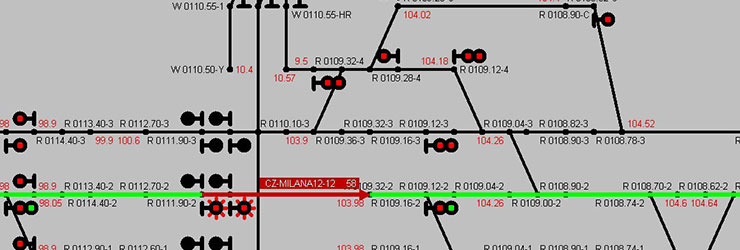
Railroad Operations Simulation
RLBA utilizes the Rail Traffic Controller (RTC) simulation software, a state-of-the-art rail modeling program designed to provide detailed simulations of the operations and capital requirements of a given rail network. Using this cutting-edge technology, RLBA is capable of providing superior data-driven analysis to support any railrelated dispute or planning project. RLBA features extensive experience using RTC in the completion of projects involving infrastructure and maintenance cost estimation, freight rate disputes, capital investment forecasting and service planning.
Select Project Descriptions:
CONSUMERS ENERGY:
RLBA incorporated railroad configuration, traffic and operating inputs provided by CSX and expert witnesses into Rail Traffic Controller (RTC), a computerized, railroad network operations simulation model employed to support Consumers Energy’s request to the Surface Transportation Board (STB) that it secure relief from excessive coal transportation rates to its J.H. Campbell Generating Complex in West Olive, MI. The stand-alone railroad modeled in RTC included 168.65 route miles including 73 trackage rights miles and a simulation of 396 trains. In concert with third party expert witnesses, RLBA was tasked with designing a hypothetical railroad that could more cost effectively deliver unit coal trains received from BNSF in the greater Chicago area to the company’s complex than currently provided by CSX Transportation.
WESTERN FUELS ASSOCIATION:
On behalf of Western Fuels Association and Basin Electric Power Cooperative, RLBA used state-of-the-art railroad simulation to develop a stand-alone railroad and demonstrate its capability to efficiently handle available coal traffic. The case centered on movements of coal between Powder River Basin mines and a electric generating station near Moba Junction, Wyoming. Using RTC simulation model, RLBA demonstrated that the proposed stand-alone railroad would meet the needs of shippers and be more cost efficient than the service then provided by BNSF, thereby justifying lower rates. RLBA staff sponsored testimony before the STB regarding the modeling process and the validity of results produced by the model. RLBA also evaluated and critiqued BNSF Reply Testimony and presented rebuttal evidence.
CONFIDENTIAL CLIENT:
On behalf of a confidential client, RLBA conducted theoretical and practical capacity analysis of a rail line in the western hemisphere. The client railroad was engaged in a legal proceeding with its customers regarding the maximum capacity of the line. Experienced, real-world railroad operating experts at RLBA employed RTC operations simulations software to perform the analyses. RLBA determined corridor capacity by producing operating statistics such as train times, train delay time and number of re-crews. RLBA simulated numerous scenarios with the RTC software to determine capacity limitations on the railroad in the current state, as well as assessing capacity improvements gained by the theoretical installation of advanced signaling, added block capacity and increasing trackage.
